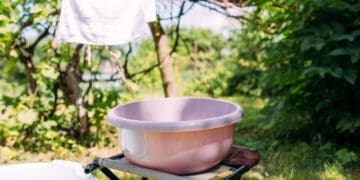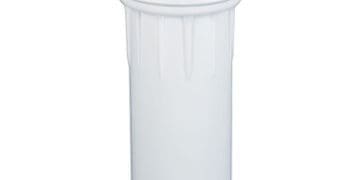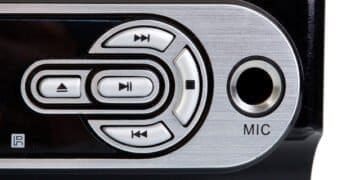A manual washing machine needs just 10 liters (2.6 gallons) of water for a complete wash cycle – quite amazing compared to traditional washers.
The machine’s efficiency stands out with its ability to clean 5 shirts or a pair of jeans in 8-10 minutes. This makes it perfect for off-grid living. Your laundry sessions can double as workout time since operating a non-electric washing machine provides an excellent cardiovascular exercise.
Our research and testing covered multiple manual washing machine designs. We examined everything from foot-powered systems to bicycle-operated units to create this detailed guide. You’ll find this guide helpful whether you want to embrace off-grid living or minimize your environmental footprint. The step-by-step instructions will help you build your own manual washing machine.
Your eco-friendly laundry solution awaits! Let’s explore the various manual washing machine types and begin your building journey.
Types of Manual Washing Machines for Off-Grid Living

Image Source: YouTube
Manual washing machines come in several innovative designs that offer unique advantages for off-grid living. These smart devices give you practical laundry solutions without electricity or complex plumbing systems. Let’s look at three main types you can choose for your self-sufficient lifestyle.
Foot-powered washing machines
Foot-powered washing machines are one of the quickest ways to wash clothes manually today. The Yirego Drumi, a popular model in this category, cleans up to two kilograms of laundry in under ten minutes with a simple pedal mechanism. This compact device needs only about 10 liters of water per load—nowhere near what conventional washers use.
You’ll find the washing process simple: fill the domed lid with water, pour it into the drum, add detergent, lock the lid, and start pedaling. Most brands suggest using about 5 liters (1.3 gallons) to wash and the same amount to rinse. The foot-pedal design makes it easier on your body than hand washing.
These machines also come with an integrated spin-dry function that makes line-drying much faster. The compact size still handles about five pounds of clothing per load—you can fit six shirts, two pairs of leggings, or a pair of jeans. This makes them perfect for singles or small families who live off-grid.
Hand-cranked washing systems
Hand-cranked washing machines give you another great option for off-grid laundry. The Wonderwash, a mini non-electric washing machine that campers and off-grid dwellers love, works with a simple hand-crank mechanism and cleans up to five pounds of clothes at once.
Lehman’s hand-washer includes a triangle-shaped agitator that keeps clothes from floating up, with an agitator lever you push back and forth to create the rolling motion needed for cleaning. The Lavario system, made in the USA, uses patented power-flow technology to clean clothes better.
Modern hand-cranked models include smart design features like:
- Magnetic handles for quick loading and unloading
- Dual-axis drive operation modes that finish washing in minutes
- Strong construction using PP, ABS plastic, and stainless steel components
These manual systems use 90% less water than standard machines, making them excellent choices if you want to save water.
Bicycle-powered washing options
Bicycle-powered washing machines employ mechanical energy from pedaling to clean clothes. The Cyclean Bike-Powered Washing Machine uses a special two-piece adapter that connects your bicycle to the washer and transfers power through the pedals. This system works as well as other manual washers but runs more quietly than regular electric machines.
The Bike-o-Worsher follows this same idea with a portable washer attached right to a bicycle. You can move and carry the whole device easily. It has a tub for water and detergent plus pedals that spin the drum with clothes inside.
The bicilavadora takes a different approach. It uses a bicycle without its seat connected to a large container through a special spinning system. When you pedal the bike, it spins the container and cleans the clothes.
Many off-grid enthusiasts build their own bicycle-powered washers. They connect a cog to the washing machine shaft and run a chain to a stationary bike. This method has become accessible to more people because “the bike is a common setup that works so well as a cheap motor”. You get clean clothes and exercise at the same time—a smart solution for off-grid living.
Whatever type you pick, these manual washing machines give you clever ways to keep your clothes clean without relying on regular power sources.
Gathering Materials and Planning Your Build

A DIY manual washing machine project starts with getting all the right materials. Experience shows that good preparation makes the build process much smoother.
Essential components for any manual washer
Every manual washing machine needs these basic parts, whatever the design:
Washing container: A waterproof vessel like a 5-gallon bucket, plastic tub, or repurposed drum serves as your washer’s heart. You’ll need a container big enough to fit clothes with space for water movement.
Agitation mechanism: This creates the motion that gets your clothes clean. Your design might use a plunger with drilled holes (for bucket washers), a hand crank, or pedals linked to an agitator.
Water management system: You’ll want a drain hole, plug, or spout to empty dirty water without lifting the whole container. Most designs use a simple drain pipe that flares at one end for a secure fit.
Frame or support structure: This keeps everything stable while you work, especially with foot-powered or bicycle-powered designs.
The Divya washing machine shows what’s possible – this manual, off-grid washer saves up to 50% of water and 75% of time compared to handwashing clothes.
Sourcing recycled materials
Building your own manual washer lets you make use of recycled materials. Here’s what to look for:
Old washing machines are a rich source of useful parts – stainless steel drums make perfect washing containers, while motors and pumps fit well in complex designs. The wiring looms, switches, and metal casings come in handy too.
Common household items work great as components. A clean plunger becomes your agitator, and PVC pipes provide structural support. Braided poly rope, nylon parachute cord, and flexible netting all play vital roles in different designs.
You can find these materials at:
- Hardware stores for new simple supplies
- Scrap yards for metal components
- Second-hand appliance stores for broken machines
- Online marketplaces for used parts
Budgeting and cost considerations
A simple manual washing machine won’t break the bank. A basic version using materials from any home supply store can cost less than $50. The final cost depends on how complex you make it and what materials you choose.
Your budget should cover these main expenses:
Container costs: A new 5-gallon bucket with lid runs about $5-10, while recycled containers might cost nothing.
Tools required: You’ll need a drill with various bits, utility knife, and maybe a saw for some designs. Borrowing tools makes more sense than buying new ones.
Additional components: Water management systems, specialized agitators, or complex pedal mechanisms add to your costs.
Commercial off-grid washing solutions cost quite a bit more: a water-free composting toilet runs around $2,200, and high-efficiency off-grid fridges cost about $1,000. Your DIY manual washing machine needs just a small investment by comparison.
It’s perfectly fine to adapt designs based on what materials you have and your skill level. The main goal is to build a washing machine that works for your off-grid lifestyle without spending too much.
Step-by-Step Construction Process

Image Source: Off-Grid & Preparedness Wiki – Fandom
Let’s start building now that you have your materials ready. I’ll show you how to build a simple manual washing machine that works well and lasts long for off-grid living.
Building the washing container
Your manual washing machine’s core component is the washing container. A sturdy 5-gallon bucket with lid makes a simple yet practical design. Clean your bucket first to remove any chemicals or debris.
Make sure your container doesn’t leak when you agitate it. Food-grade buckets work best since manufacturers design them to be watertight. You could also nest a 30-gallon barrel inside a 55-gallon one to handle bigger loads.
To name just one example, see a rectangular tank using special sheet metal with holes for plastering called Hi-rib. This design takes more work but stays stable for years.
Creating the agitation mechanism
The agitation mechanism helps clean your clothes by moving water through the washing container. Most designs use a modified plunger that moves water and clothes in the most effective way.
Here’s the quickest way to make an agitator:
- Grab a standard cup plunger and drill 6-8 holes (about 3/8-inch diameter) in a random pattern on the rubber cup
- These holes let water flow and stop the plunger from sticking to the bucket’s bottom
- Make a 1-1/8 inch hole in your bucket lid’s center for the plunger handle
Advanced builders can use three PVC pipes inside the barrel. These pipes help clothes move like they do in commercial machines. Another option uses funnels connected to vertical PVC pipes with a hand-operated lever that creates great churning action.
Adding a water management system
A good water flow system makes your manual washing machine practical. You need proper drainage to empty dirty water without spills.
The simple solution is to put a plastic water dispenser replacement spigot near your washing container’s bottom. Use silicone sealant around the spigot if you notice leaks.
A better system includes:
- Heat and flare a 1/2-inch PVC drain pipe’s end to create a tapered hole
- Make a silicone rubber plug with a nylon string loop you can pull easily
- Put the drain pipe in your container’s bottom corner
This drain lets you control when water leaves your machine and makes rinsing much easier. You can connect your drain to a greywater recycling system outdoors to save water.
Test your water system before washing your first load. Finding leaks after adding detergent and clothes creates a mess you don’t want to deal with.
Maximizing Washing Efficiency

Image Source: The Owner-Builder Network
You’ll get excellent results once you learn the basics of manual washing. The real challenge comes after building your machine – getting your clothes clean without wasting resources.
Best practices for manual washing
Pre-soaking heavily soiled items loosens dirt and grime before washing. This simple step saves you scrubbing time and gets clothes cleaner. Sort your laundry into delicates, whites, and darks to prevent color bleeding and fabric damage. Your water stays cleaner longer when you brush or shake off visible dirt from clothes before washing.
The manual washing machine needs space for clothes to move freely in the tub. Overloading prevents proper cleaning. High-efficiency automatic washers clean through clothes rubbing against each other. Your manual washer works the same way.
Using the right amount of water and soap
Manual washing machines use water efficiently. Standard washing machines need 40-45 gallons per load. Your manual system works with just 10-25 gallons. The washtub needs enough water to submerge clothes while allowing movement.
Less soap works better with manual washing. Too many suds reduce cleaning power by limiting friction between clothes. Liquid detergents dissolve and rinse out easier than powders in manual systems.
Fresh water removes soap residue after washing. Many off-grid users add white vinegar to rinse water. This natural solution removes soap and softens clothes.
Techniques for different fabric types
Each fabric type needs its own washing approach:
Cotton handles vigorous washing well. Cold water works best for linen – hang it to dry instead of wringing it out. Wool needs gentle care in cold water. Avoid too much agitation that might shrink or felt the fibers.
Silk requires separate hand washing with minimal movement. Cool water cleans synthetic fabrics like polyester well. These materials need less scrubbing than natural fibers.
Let your clothes air dry naturally. Sunshine sanitizes clothes, which works great for items like diapers.
Integrating Your Washing Machine into Off-Grid Systems

Image Source: Sustainability Success
A self-sufficient laundry solution emerges when you connect your manual washing machine to green water systems. The value of your off-grid washing setup multiplies through its integration with comprehensive water management systems.
Connecting to rainwater collection
Rainwater serves as an excellent source for your manual washing machine. A standard washing machine uses 60-80 liters per cycle, but your manual version needs nowhere near as much.
Your connection needs these steps:
Simple mesh filters remove debris that could harm your washing system. These filters work perfectly for this purpose.
Your rainwater tank should sit higher than the washing machine if possible. Natural water pressure flows without any pumps this way.
A shower booster pump easily connects to rainwater lines in areas with minimal elevation changes. These pumps start automatically when water flows to the machine and stop when it doesn’t. The washing machines need water at standard pressure (1-3.5 bar), which equals water flowing from a tank 10-35 meters above your machine.
Setting up greywater recycling
Laundry wastewater stays cleaner than other household waste streams and makes recycling easier. A simple “laundry-to-landscape” system sends wastewater straight to your garden or orchard.
Your greywater recycling needs these elements:
- Biodegradable detergents without salt, sodium compounds, boron, or chlorine bleach protect your soil.
- Your washing machine’s drain connects to 1-inch diameter PVC piping. Larger sizes reduce pressure while smaller ones overwork the pump.
- A three-way valve helps direct water to either regular drainage or your greywater system.
The outdoor setup uses 1-inch high-density polyethylene tubing with barbed tee fittings that distribute water to multiple plants. A top-loading manual washer can irrigate up to 20 plants this way.
Creating an outdoor washing station
An outdoor washing station works best for off-grid laundry operations, particularly during warm months.
Your functional station requires:
A stable platform built from 2x4s supports your washing container securely. Two 5-gallon command totes handle water storage – one for clean water and another to catch used water.
The station’s location near garden areas makes greywater distribution simple. This setup creates a water-conservation hub that goes beyond just washing clothes.
A simple roof or awning shields your washing area from sun and rain. This protection extends your equipment’s life and makes the washing experience more comfortable.
Conclusion
A manual washing machine can help you live sustainably off the grid. My research and testing show that clean clothes don’t need electricity or complex systems to get the job done.
These simple washers clean clothes effectively with just 10 liters of water. You get some exercise while doing laundry, making them perfect for eco-conscious homes.
Manual washing machines work great with rainwater collection and greywater systems. This setup creates an eco-friendly laundry solution that saves resources and handles daily cleaning needs efficiently.
The key to success lies in building these machines correctly. Good materials, proper construction, and smart water use make all the difference. You can choose foot-powered, hand-cranked, or bicycle-operated designs that solve everyday challenges with simple technology.
Your homemade manual washing machine is ready to help you live self-sufficiently. It’s proof of green practices and practical off-grid solutions that work.
FAQs
Q1. Can I build a washing machine for off-grid living?
Yes, you can build a manual washing machine that works without electricity. Options include foot-powered, hand-cranked, and bicycle-powered designs that use minimal water and are ideal for off-grid living.
Q2. How much water does a manual washing machine use?
Manual washing machines are highly efficient, using only about 10 liters (2.6 gallons) of water per wash cycle. This is significantly less than conventional washing machines, which typically use 40-45 gallons per load.
Q3. What materials do I need to build a basic manual washing machine?
Essential components include a waterproof container (like a 5-gallon bucket), an agitation mechanism (such as a modified plunger), a water management system (drain hole or spout), and a frame for stability. Many parts can be sourced from recycled materials to keep costs low.
Q4. How effective are manual washing machines at cleaning clothes?
Manual washing machines can be very effective when used correctly. They can clean up to 5 shirts or a pair of jeans in 8-10 minutes. For best results, pre-soak heavily soiled items, don’t overload the machine, and use the right amount of biodegradable detergent.
Q5. Can I integrate a manual washing machine with other off-grid systems?
Absolutely. Manual washing machines work well with rainwater collection systems for water supply and can be connected to greywater recycling setups for efficient water use. Creating an outdoor washing station near your garden allows for easy distribution of greywater for irrigation.




















































